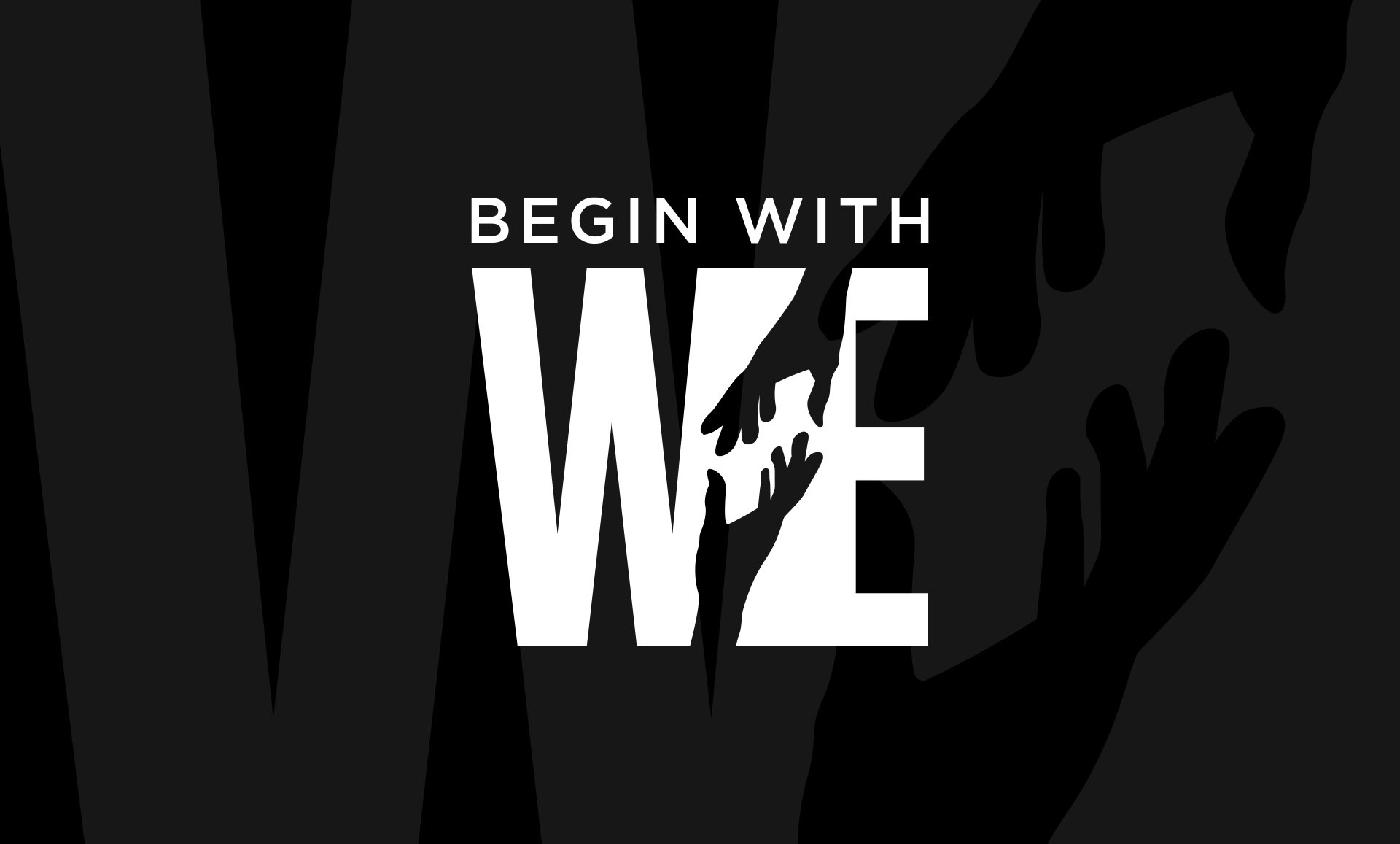The following is adapted from Begin With WE.
If you have the courage to do the digging, gold can be mined from a mistake. Just ask the former CEO of Ford, Alan Mulally. When he was brought on as the CEO of Ford in 2006, Mulally was tasked with unifying Ford’s divided global operations, transforming its lackluster product offering, and overcoming a dysfunctional culture.
Mulally asked managers to color-code their status reports: green for “good,” yellow for “caution,” and red for “problems”—a common management technique to help quickly identify areas needing attention. Even though the company was facing a $17 billion loss, during his first few meetings, every leader coded their operations green, meaning “good.”
Now, I haven’t spent a single day behind the curtain at Ford. But I’m certain, in a company that size, with thousands of employees, it’s patently impossible for every operation to be “good.” Obviously, the managers at Ford were reluctant to share underperforming and even failing operations with the new boss. But to his credit, Mulally didn’t buy the self-reported “health” of each of the operations. He urged the managers to think long and hard about their assessments, ask new questions, and come back with a more objective view.
At the same time, one of his executives was dealing with a major issue—a malfunctioning lift-gate actuator on the Ford Edge—that was so perplexing, that he was forced to halt vehicle production (always a costly move in manufacturing). This brave leader brought a bright red readout to the next status meeting.
Mulally outright applauded it, literally. A few weeks later, those all-green reports resembled something like a Skittles ad. “At that moment, we all knew that we were going to trust each other,” Mulally would later say. “We were going to help each other to turn the reds to yellows to greens.”
Mistakes are Growth Opportunities
My favorite part of this story? That brave executive to first report a red status was Mark Fields, Mulally’s eventual successor as CEO at Ford. Score one for doing the right thing, leading by example, and owning mistakes!
Fields showed incredible courage and leaned into his peers and a new leader for help. His transparency had a lasting impact on Mulally and the senior team at Ford. It takes courage to own your mistakes. But when you screw up, it’s important to assess it, own it, and try like hell to fix it—while at the same time communicating all of this to the people on your team so they can help.
The crux of the matter is this: we are human. Humans screw up. It’s a given. You can allow screwups to crush you, or you can own them and recognize the mistake for what it is—a growth opportunity. That’s why it’s so important to recognize that making mistakes is a necessary part of taking action. And just as important is using the mistake to prevent errors from happening in the future.
There are 3 Kinds of Mistakes
Before we get into the importance of mistakes, I need to insert a disclaimer: not all mistakes are created equal, and some mistakes are more forgivable than others. A mistake made from carelessness can be tolerated and forgiven—once. However, carelessness can be pervasive, and accepting the same mistake more than once sends all kinds of bad messages to your crew.
A mistake made from malice, however, can’t be tolerated at all. If someone lies, hides information, and/or knowingly fails to live up to their responsibilities, those mistakes all fall into this category and should be met with swift and decisive action. You simply cannot allow this behavior on your team.
There’s a third kind of mistake, which is actually worth embracing: the good-faith mistake. I like to think most mistakes fall into this category; they’re made in good faith while actively pursuing improvement. These are the kinds of mistakes that can be gifts.
The good-faith mistake comes along when you’re stretching yourself, when you’re trying something new, and when you’re doing something in a different way. These mistakes are both inevitable and good. They can and should result in positive change, both on a micro and a macro level.
Own Your Mistakes
Think of an accounting mistake: if you don’t own it, either it will resurface next month when you correctly close the books—or, if you perpetuate the same calculation error, it will only snowball and grow every month. There’s no “covering it up,” and it’s not going to magically fix itself, so isn’t it better to get out in front and own it as soon as you recognize the problem? Owning mistakes early stops little things from turning into big problems.
As important as this is, owning mistakes is rarely even talked about in Corporate America. The blame for that lands on bosses at every level. This plagues most company cultures for two reasons: bosses are afraid of looking inept in front of their employees and exposing their vulnerabilities. And, they’re afraid of looking bad in front of their own bosses and jeopardizing their reputation.
Of course, the team sees when the boss attempts to gloss over or downplay a mistake, sending the message, “Only admit fault when absolutely necessary.” So, what do members of the team do when they err? You got it: “Only admit fault when absolutely necessary.” This cycle will indefinitely repeat until an authentic leader steps in.
It doesn’t have to be this way, though. The key is to shift the focus from me to WE, turning the analysis of the mistake from who to what. Don’t spend energy focusing on the person; rather, focus on the problem. Suddenly, you’ll find it a lot easier to craft a culture where owning mistakes is commonplace.
Courage is Crucial
Before you can effectively create this kind of culture, it’s important to face the fears that may be holding you back. After all, owning mistakes takes courage.
A lack of self-confidence can take plenty of forms, and it exists at all levels within a firm. It’s especially common in junior or inexperienced bosses, but it’s even more tragic when you see it in tenured managers.
You see, many leaders function with a certain amount of imposter syndrome. They feel like making a mistake devalues them, hurts their credibility, and exposes them as someone who can’t lead others. As a result, some leaders push the message that they can do no wrong. If something does go wrong, it’s probably someone else’s fault.
This type of boss tends to conflate “authority” and “accuracy,” implying, “I’m the boss. I’m right. What I say goes. And don’t question it.” Then they double down on a mistake instead of owning it and working to fix the problem. News flash: this is not a great strategy for building a culture of excellence.
Admit When You’re On the Wrong Path
To see why let’s say I’m leading my team on a hike. Two miles into the hike, I come to a fork in the path and decide to turn left. Within a quarter of a mile, pretty much everyone on the hike realizes we’ve made a wrong turn—including me, probably. But instead of turning around, I dig in and say, “I’m pretty sure this is right. Let’s keep going.”
Then I take another turn to the left, hoping to course-correct without having to admit my mistake. Two miles later, we’re in a really bad place. Everyone knows we’re lost, but I refuse to admit I led us in the wrong direction.
What happens in this scenario? My team starts shrinking. The best and brightest will be the first to realize their leader doesn’t know what the hell he’s doing. They’ll split from the pack early, but it won’t be long before most others get tired of being led down the wrong path as well. It’s only a matter of time before they quit following me too.
And why shouldn’t they? I’m wasting everyone’s time and energy, including my own. There’s every chance that one of them could actually direct the whole group of us back to the right path, but I’m not giving anyone the opportunity to help. Conclusion: the hike is an epic fail. More specifically, my leadership on the hike is an epic fail.
This is a common scenario when working with an insecure boss. The more they stand their ground and refuse to own a mistake, the more the team suffers. In addition to the team mirroring the unhealthy behavior, other potential consequences include turnover, a lack of respect, a lack of trust, and a general sense of skepticism in the boss. Of course, as an authentic leader, there are times you must stand your ground, but if the entire team is telling you, “We need to turn around,” you would do well to listen.
Be Flexible
Stubbornness is one way insecurity rears its ugly head, but it also shows up in the form of timidity—and being a timid leader doesn’t get the team very far either. Go back to the hike scenario: if I’m a timid leader, I might be so afraid of making a mistake that I sit down at the trailhead and don’t bother leading us onto the actual trail. No one wants to be led by this person. Cue the corporate mutiny!
Good leadership doesn’t mean being an immovable object. It also doesn’t mean you hide under your desk. Good leadership requires you to listen to your people, admit when you’re wrong, and change your position when it’s necessary. That’s how you can move forward and learn from mistakes—and help ensure that your company, and your people, thrive in the process.
For more advice on how to turn mistakes into golden opportunities, you can find Begin With WE on Amazon.
Kyle McDowell is an author, speaker, and leadership coach with nearly three decades of experience leading tens of thousands of employees at some of the biggest companies in the United States. With an MBA from the Kellogg School of Management at Northwestern University, Kyle is widely known for his inspiring approaches to transforming bosses into leaders and reshaping corporate cultures.


